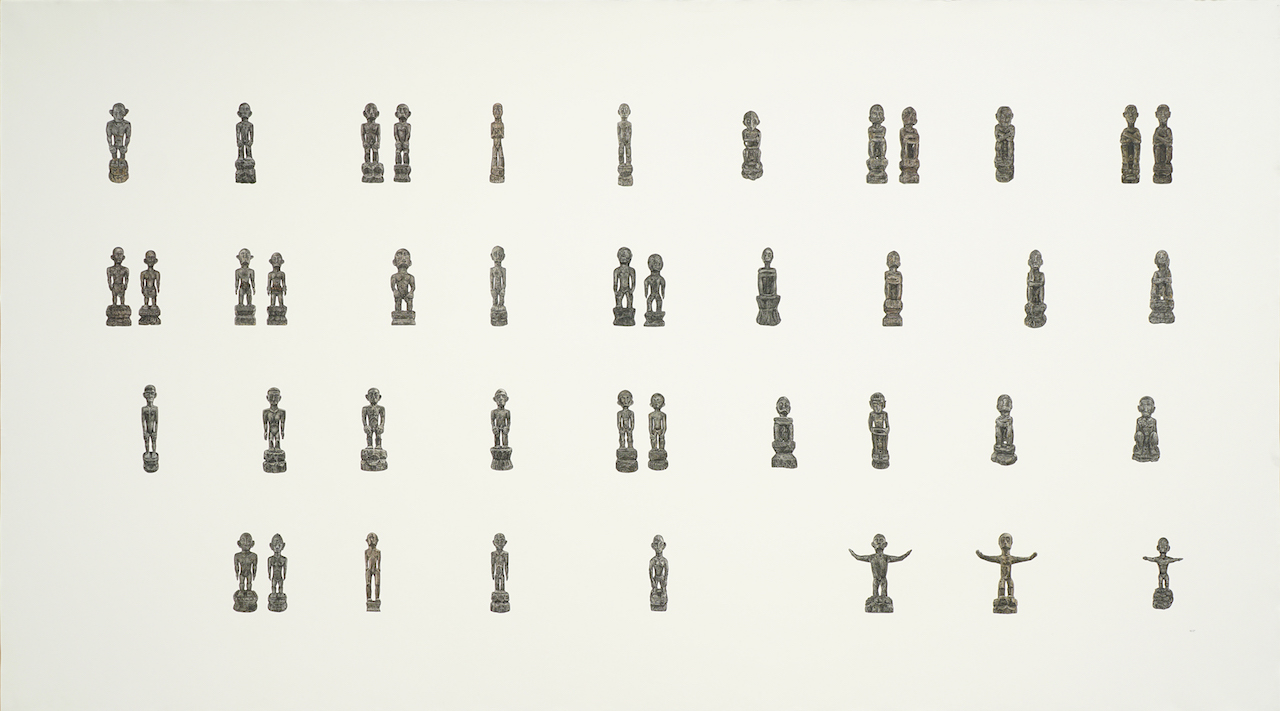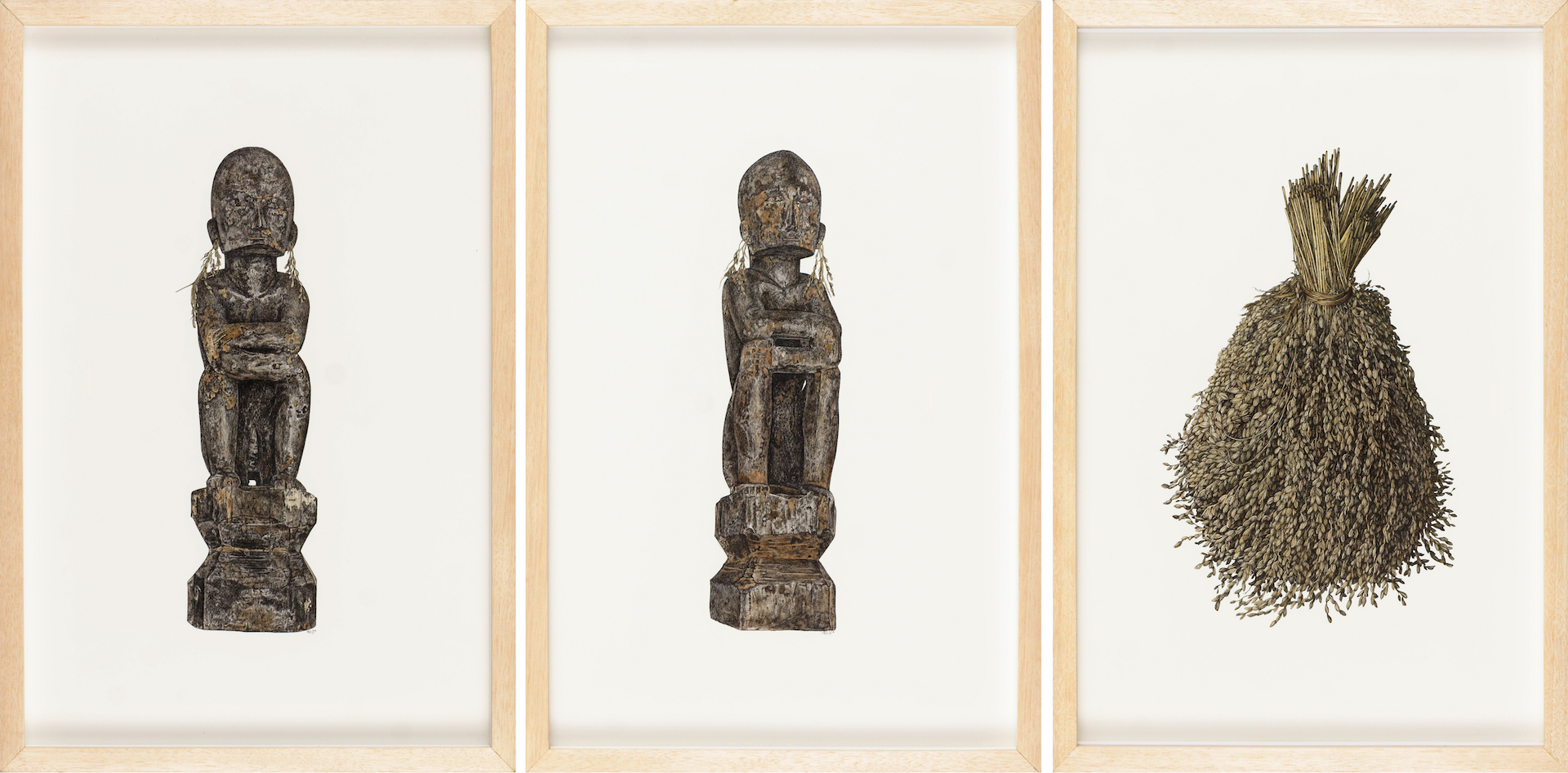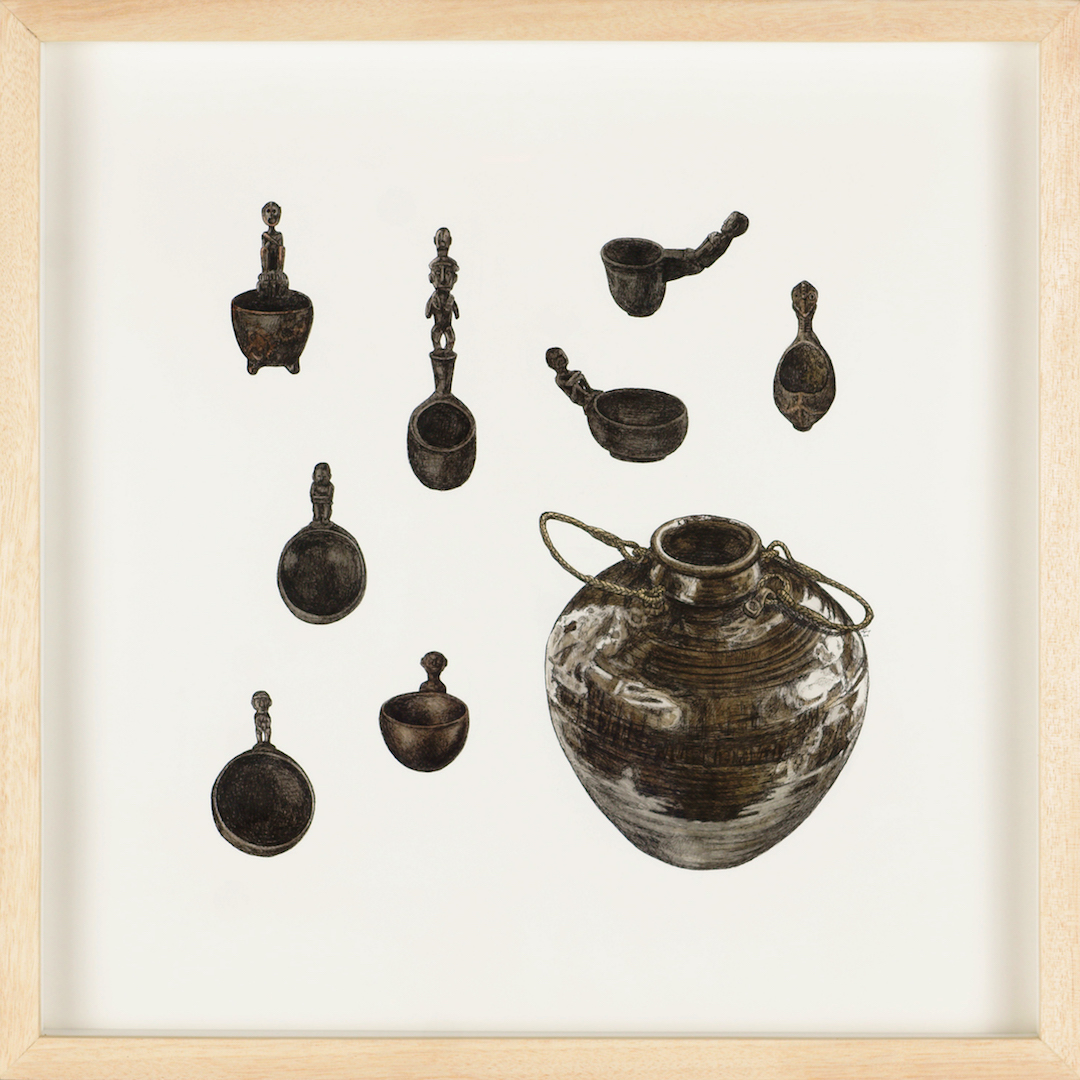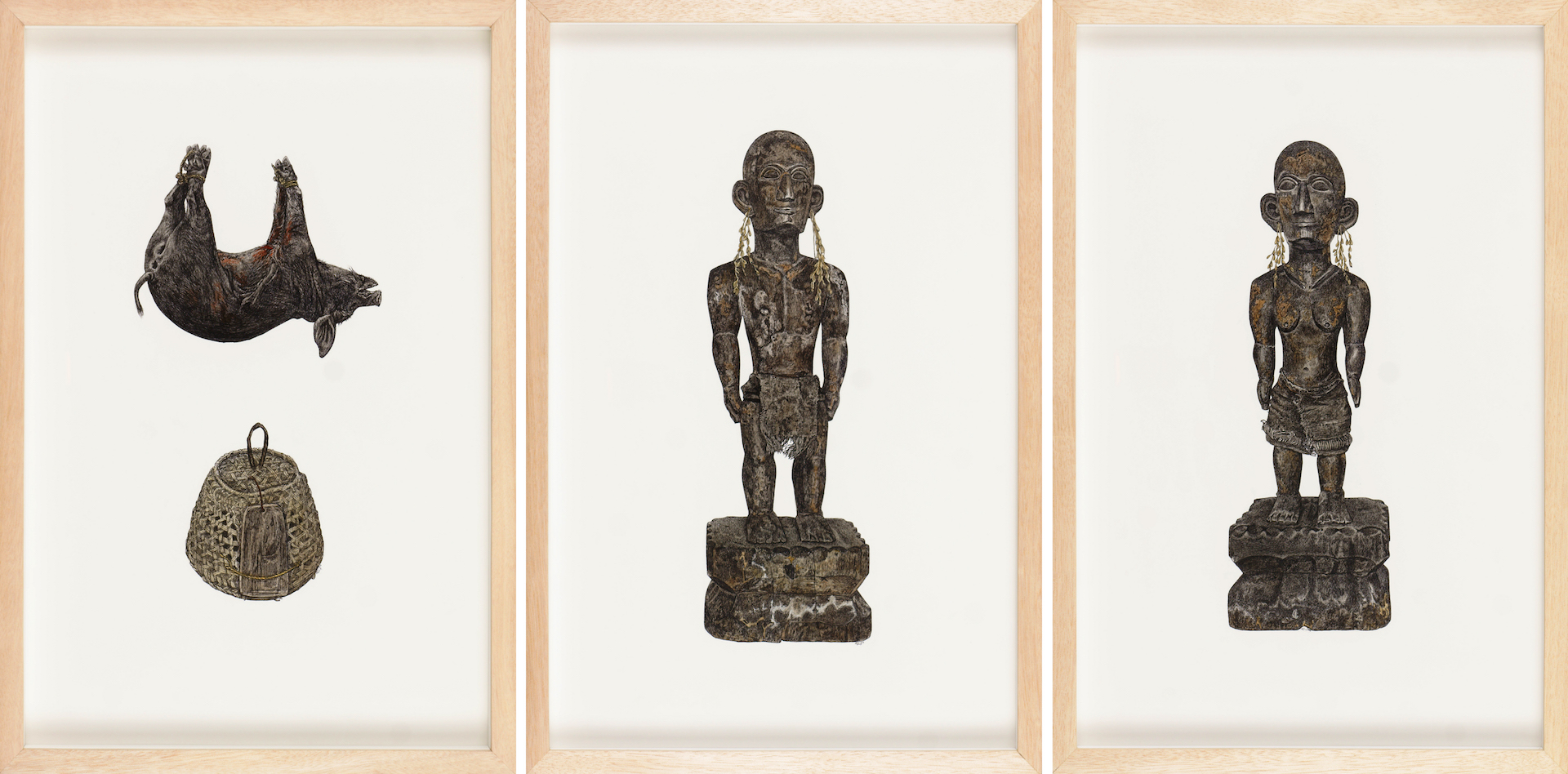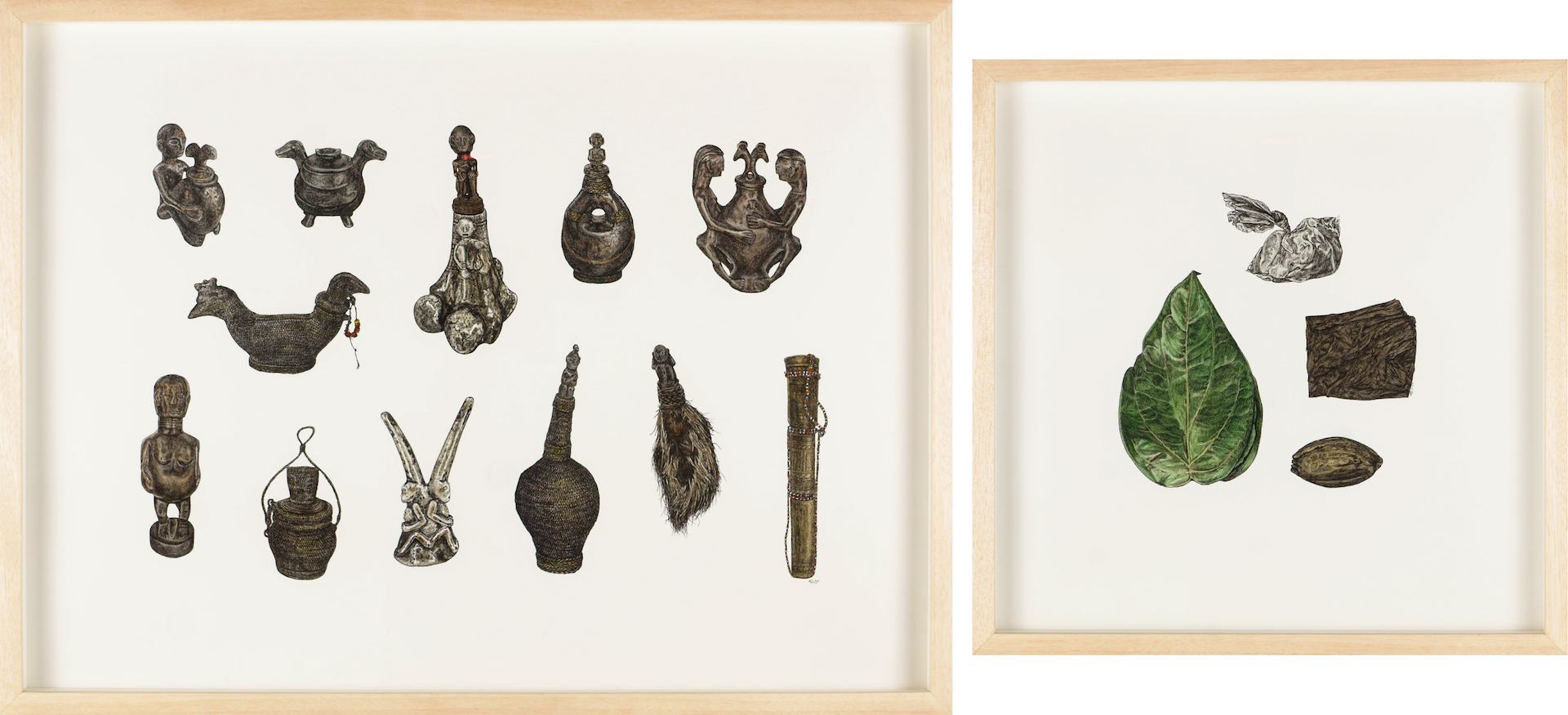Fragmentary Conversations
13 Oct - 02 Dec 2018
Henrielle Pagkaliwangan
FRAGMENTARY CONVERSATIONS Solo Exhibition | Henrielle Pagkaliwangan
13 October to 02 December 2018
Henrielle Baltazar Pagkaliwangan employs pen and ink drawings to present narratives via categorization of objects. Borrowing from the visual vocabulary of natural history illustrations, her practice subverts the neutrality and objectivity of scientific representation, presenting it instead as ideologically-laden and subjective. As such, her visual inventories prove to be powerful vehicles for story-telling.
Her upcoming exhibition, Fragmentary Conversations, opening 13 October 2018 at the BenCab Museum, takes off from the collection of the museum, specifically its notable array of bulul artifacts. The bulul has been used to singularly represent the rich fabric of Cordillera life and its diverse material culture. Brought to an almost iconic stature, it continues to be an object-image fraught with paradoxes, reinterpretations, and mis-interpretations. Its contemporary form that of a shape-shifter. A postmodern apparition.
Instead, the show aims at a reversal of the trend, a deviation from the current trajectory of the object-image’s cultural representation despite the futility of such an endeavor or the seeming paradox of undertaking such via another artistic depiction. Origins must continue to hold sway after all. And the stories of the mumbaki, carvers, and farmers from the Cordillera must figure in the continued accrual of meaning of the bulul in popular and artistic expressions.
Henrielle Pagkaliwangan graduated from the University of the Philippines College of Fine Arts (Major in Studio Arts – Painting) in 2015 where she was received the Outstanding Thesis award for her work Taxonomy of Things. She has joined group exhibitions in the Philippines, Indonesia, and Taiwan. In 2017, she spent a one-month art residency in Florence, Italy. Fragmentary Conversations is her third solo exhibition.

